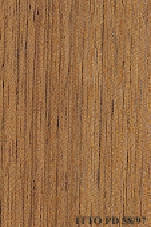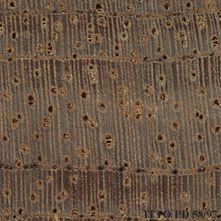
COPAIBA (Copaifera officinalis)
Nombre comercial
Copaiba
Nombre científico (con autor)
Copaifera officinalis (Jacq.) L.
Familia
LEGUMINOSAE
Nombres Comunes
Caniva (Panama); Balsamo (Trinidad & Tobago); Bálsamo De Copaiba (Cuba); Aceite (Venezuela); Copaiba (Perú); Cupay (Paraguay); Aceite Copaiba (Colombia); Canime (Colombia); Bálsamo De Copa (Cuba); Copaiba (Colombia); Copaiba (Ecuador); Copaiba (Perú); Palo De Aceite; Pau Olho (Brazil); Pau De Óleo (Brazil); Aceite (Venezuela); Currucay; Camiba; Cabimo; Copaíba (Brazil); Copahyba (Brazil); Copahiba (Brazil)
Nombres científicos sinónimos (con autores)
Copaiva officinalis Jacq.; Copaifera jacquinii Desf.; Copaiba officinalis Adans.
DESCRIPCIÓN DEL ÁRBOL
Descripción botánica
It is a large tree, reaching heights of up to 40 m, with trunk diameters of 60 cm. The boles are cylindrical, without buttresses, and commercial lengths of about 20 m.
Hábitat natural
Copaifera officinalis is spread in tropical America in a wide variety of habitats in tropical rain and dry forests. It prefers well drained sites.
Distribución natural
The natural growth range of this species is Central America and tropical South America, it is also grows in the Caribbean.
IDENTIFICACIÓN DE LA MADERA
Descripción anatómica de la madera
Wood diffuse porous. Vessels solitary and in short radial multiples. Tangential diameter of vessel lumina 150 to 200 micras (medium). Vessels per mm2 less than 6 (rare). Simple perforation plates. Vessel-ray pits similar to intervessel pits in size and shape. I Axial parenchyma in marginal or in seemingly marginal bands. Paratracheal axial parenchyma scanty and/or vasicentric. Axial parenchyma in thick bands. Prismatic crystals in chambered axial parenchyma cells and/or in fibers. Two cells per parenchyma strand. 4 to 10 rays per mm (medium). Rays 1 to 4 seriate. Homogeneous rays and/or sub-homogeneous rays (all ray cells procumbent). Fibers with simple to minutely bordered pits.
-
 Foto macroscópica de la madera, plano radial
Foto macroscópica de la madera, plano radial
-
 Foto microscópica sección transversal de la madera
Foto microscópica sección transversal de la madera
Disponibilidad
Status de protección por CITES
Unrestricted
DESCRIPCIÓN GENERAL DE LA MADERA
Olor
It has no distinct odor or taste.
Color
The sapwood is pinkish red, the heartwood suddenly changes into yellowish red.
Indice de Color (1= Negro, violeta; 7= Amarillo claro, blanco)
3
Grano
Straight or interlocked grain is often found in this species.
Veta
The wood is typically medium in texture.
Brillo
The wood surfaces tend to be moderately to highly lustrous
Durabilidad Natural
Copaiba timber is reported as moderately durable against decay and insects attack.
Indice de Durabilidad Natural (1=Muy alta, 7=Muy baja)
3
Dificultad para impregnar
The timber is difficult to treat with preservatives.
PROPIEDADES FÍSICAS DE LA MADERA
Densidad Básica (Peso anhidro/Vol. saturado) (g/cm³)
0.61
Densidad seca al aire (Peso y volúmen CH12%) (g/cm³)
0.67
Contracción Tangencial Total (Saturado hasta anhidro) (%)
6.6
Contracción Radial Total (Saturado hasta anhidro) (%)
4.2
Defectos por secado
Ease of Drying: This species air seasons rapidly and almost without defects. Drying Defects: In Colombia risk of twisting and cupping is reported.
Calendario de Secado
JUNAC-A
Estabilidad Dimensional (Contracción Total Tangencial %/Contracción Total Radial %)
1.6
PROPIEDADES QUÍMICAS DE LA MADERA
PROPIEDADES MECÁNICAS DE LA MADERA
Resistencia a flexión (Módulo de ruptura) CH12% (kgf/cm²)
911
Rigidez (Módulo de elasticidad) CH12% (kgf/cm²)
80000
Resistencia a la compresión paralela a la fibra CH12% (kgf/cm²)
479
Resistencia a la compresión perpendicular a la fibra CH12% (kgf/cm²)
92
Cizallamiento radial CH12% (kgf/cm²)
116
Dureza Janka (lados) CH12% (kgf)
537
Dureza Janka (extremos) CH12% (kgf)
622
TRABAJABILIDAD
Aserrado
This species is easy to saw.
Corte de chapa rotativa
Light Copaifera species are reported to be interesting for peeling, the heavier species can be sliced.
Chapa tranchada
Light Copaifera species are reported to be interesting for peeling, the heavier species can be sliced.
Cepillado
Planing operations are rather easy.
Moldurado
Molding is reported to be easy.
Torneado
30
Taladrado
This species is easy to bore.
Usos Reportados
USOS FINALES (RESUMEN)
HOUSING GENERAL, beams, joists, boards, flooring, frames, steps, panelling, fittings, shutter boards, FURNITURE AND CABINETS, PLYWOOD AND VENEER, faces, TURNING, CONTAINERS, truck bodies, OTHER AND MUSICAL INSTRUMENTS, door core, moldings
VIVIENDA GENERAL
- 10 - Silica in Timbers
vigas
- 11 - Prospect: The wood database
Viguetas
- 12 - Tropical timbers of the world. Part I-Tropical American Species
Tablas
- 13 - Dry kiln schedules for commercial woods. Temperate and tropical. Section III. Latin American (Mexico, Central, and South America) Woods–Conventional Temperatures
Pisos
- 14 - Handbook of Hardwoods
Marcos
- 16 - Woods of the World
Peldaños
- 17 - Tree Conservation Database
Paneles
- 18 - W3TROPICOS Missouri Botanical Garden
Accesorios de madera
- 19 - Silica in Timbers
Persianas
- 20 - Prospect: The wood database
MUEBLES Y GABINETES
- 21 - Tropical timbers of the world. Part III-Southeast Asian and Oceanian Species.
TABLEROS Y CHAPAS
- 25 - Directory of Timber Trade Malaysia
Caras
- 26 - Annual Review and Assessment of the World Timber Situation 1998-ITTO
Torneado
- 30 - Embassy of Honduras in Japan
Carrocería de camión
- 53 - Timbers of the New World
Alma de puerta
- 76 - Descripción General y Anatómica de 105 Maderas del Grupo Andino.
Molduras
- 79 - Padronização da Nomenclatura Comercial Brasileira das Madeiras Tropicais Amazônicas, Sugestão
Please Provide Information To View Producer Information